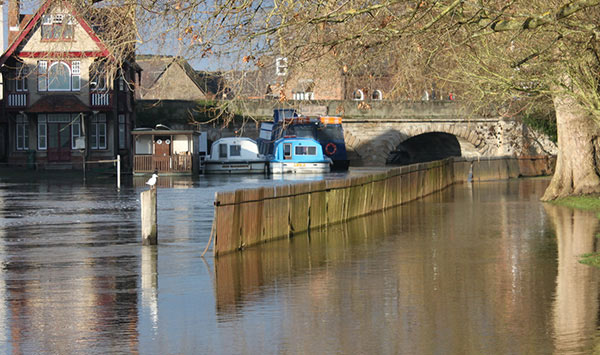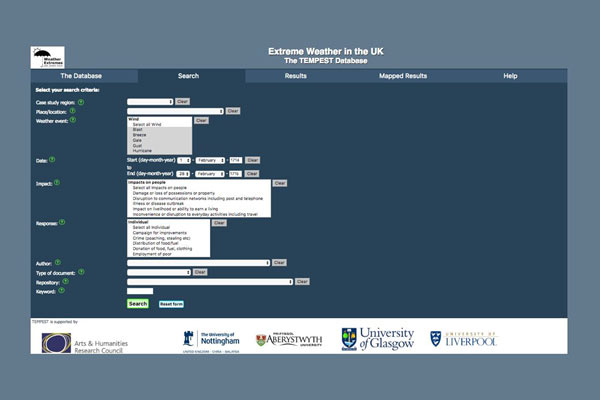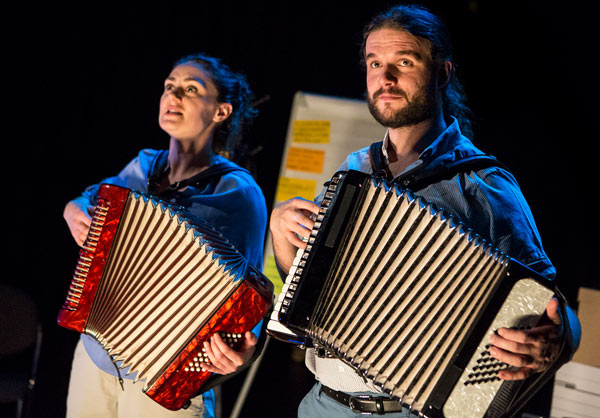
Climate change is a global phenomenon but it can often feel abstract and detached from our everyday lives. Engagement with the public about climate change can be more effective if human experiences of extreme weather are used, in the form of memories and personal stories.
Tom Webb (Postdoctoral Research Associate) from the ‘Weather Extremes’ project, reflects on how using the histories of local extreme weather events can help (re)engage the public with the risks of climate change.
Extreme weather in 21st Century Britain
In recent years, extreme levels of rainfall have led to flooding across various parts of the United Kingdom. The November to January period of 2015/16 saw the wettest three-months in UK rainfall series since records began in 1910. Storms Desmond, Abigail, Frank and Gertrude hit Britain over these months and approximately 16,000 properties in England were flooded. Scientists are wary to directly correlate such extreme weather with climate change, but recent modelling studies do point towards the role of human-induced global warming in causing such weather.
For most of us, the impact of these weather events only really becomes comprehensible when the scientific statistics and data are accompanied by images, footage and individual stories of the devastation caused by flooding. These cultural sources bring to the fore the experience of the individual and the emotional impact of such weather. Importantly, they inform larger questions about the resilience and vulnerability of particular individuals and communities to the future risks of climate change and the impacts of extreme weather events.

Researching extreme weather in the past
Just as weather patterns are variable and have shifted over time, so to have conceptions of the weather and ways of responding to it. Historical actors have drawn on various religious, superstitious, meteorological and experiential insights to comprehend the weather. They have also prepared for, and responded to, extreme weather events in a multitude of ways. Through investigating these, there are potential lessons to be learnt about climate challenges and change through comparing experiences of extreme weather in the past with those of today.
To do this, we can explore the TEMPEST (Tracking Extremes of Meteorological Phenomena Experienced in Space and Time) database, which was created out of the recently funded AHRC project, ‘Spaces of experience, horizons of expectation: the implication of extreme weather events past, present and future’ (2013-16). This publically accessible database contains roughly 18,000 historical weather events records relating to Britain primarily over the past three centuries. It includes weather records from source bases including diaries, letters, newspapers and parish records. Significantly, it establishes an important legacy for constituting Britain’s weather memory and heritage.

'The Storm Officer'
Engaging with the public
In a follow-on project - ‘Weathering the storm: TEMPEST and engagement with the national weather memory’ - our aim for this year is to use the TEMPEST database to actively engage with the public about climate and weather histories, to prepare people for future weather events.
We will be running workshops to introduce the public to the TEMPEST database and there will be performances of ‘The Storm Officer’, a play inspired by the contents of the TEMPEST database. These activities are in partnership with the Archives and Records Association.